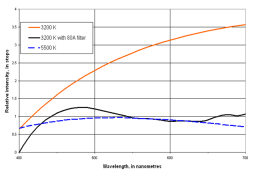pideja
Member
- Joined
- Feb 10, 2005
- Messages
- 4
- Format
- 35mm
I've been shooting stage sets (theater) for fifteen years now, almost exclusively on Fuji NPL 4x5 film. This involves long exposure, variable lighting and very long dynamic range. The Fuji product is great at this and I have found no other film quite like it. But alas, I can't find it anymore. I have tried, horror of horrors, to shoot a few plays with a digital camera and although the results at times seemed promising, it is not the same. By far.
So, what am I to do?
Without film in the 4x5 format, I can always shoot in medium format but for how long?
And buying a medium format or 4x5 digital back is not really an option.
Is there no negative tungsten color film anymore?
So, what am I to do?
Without film in the 4x5 format, I can always shoot in medium format but for how long?
And buying a medium format or 4x5 digital back is not really an option.
Is there no negative tungsten color film anymore?











